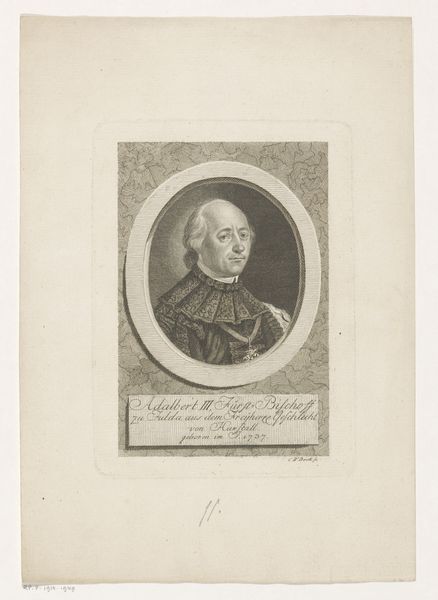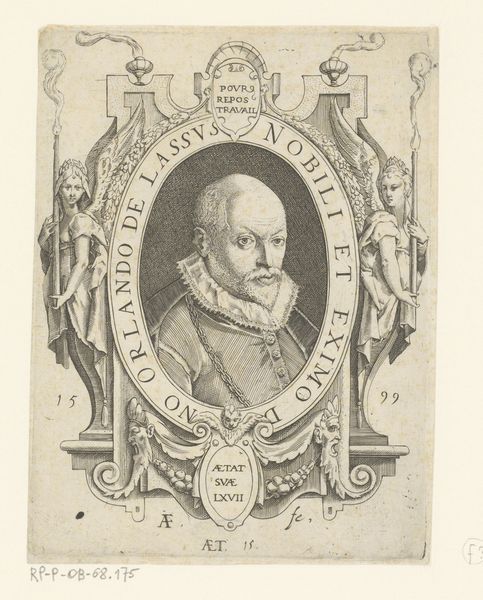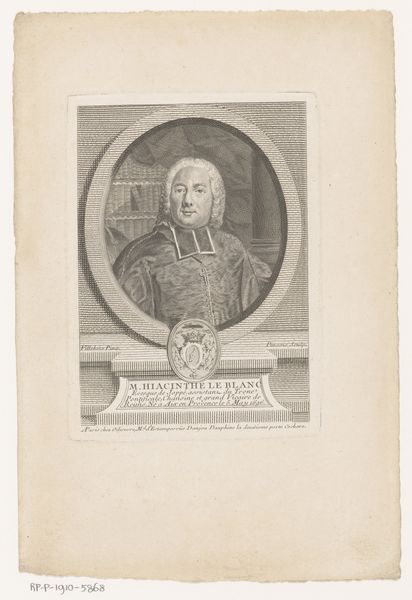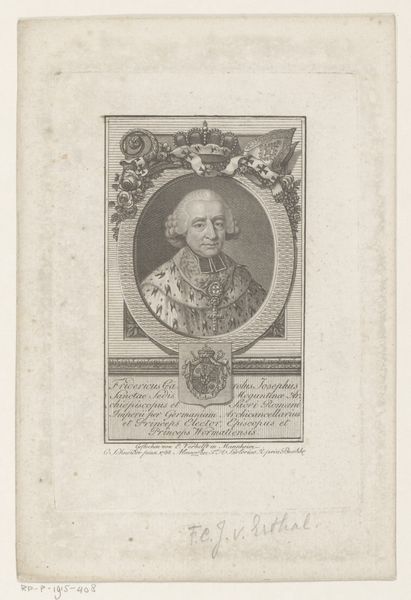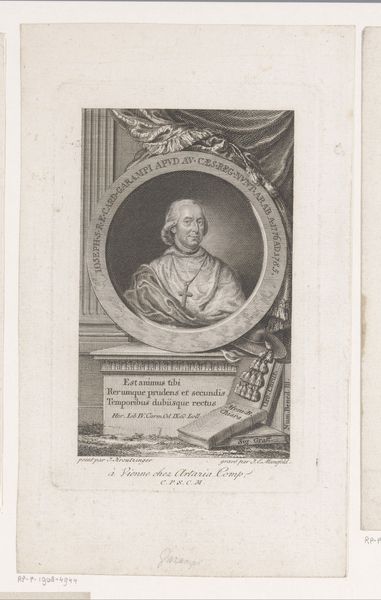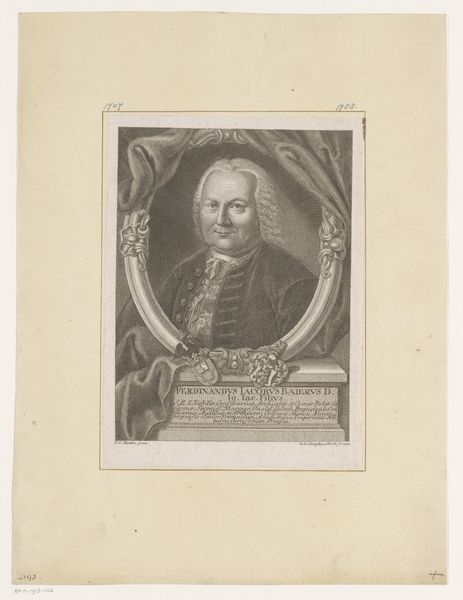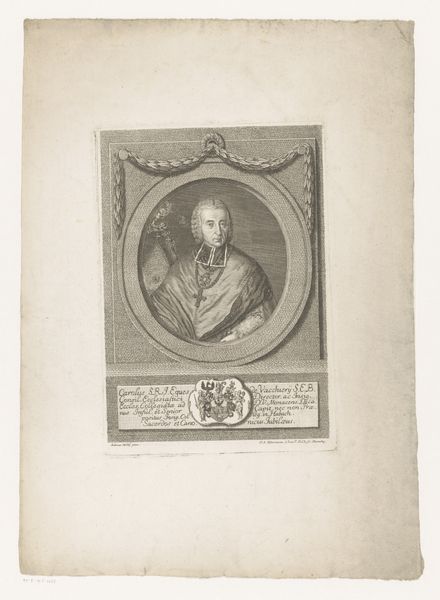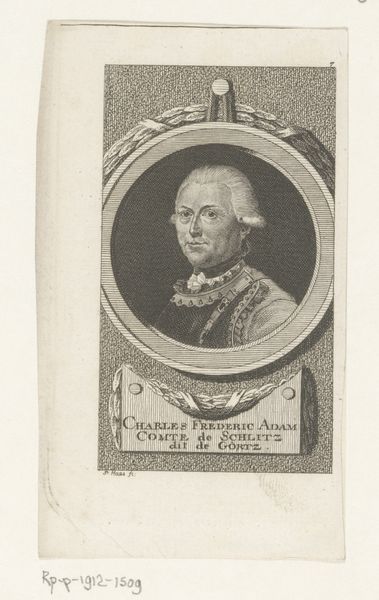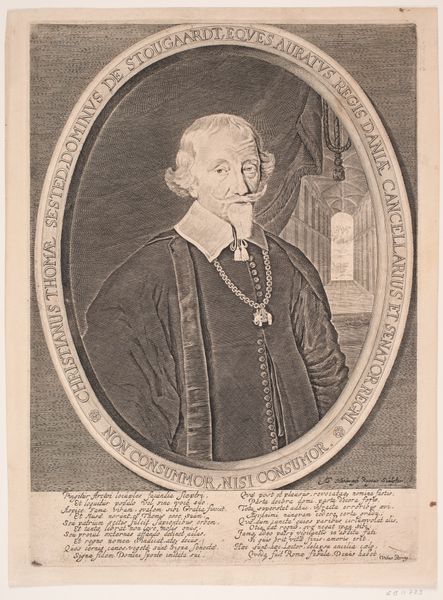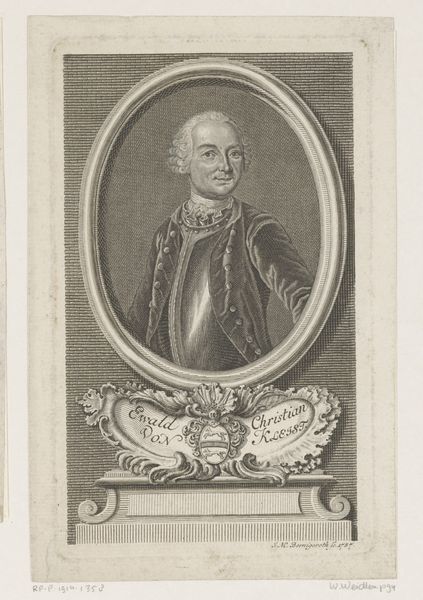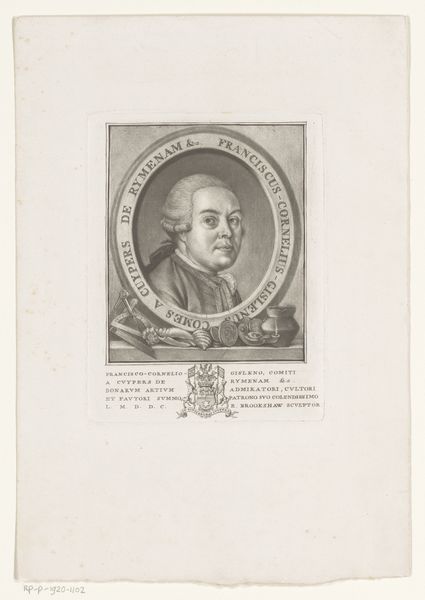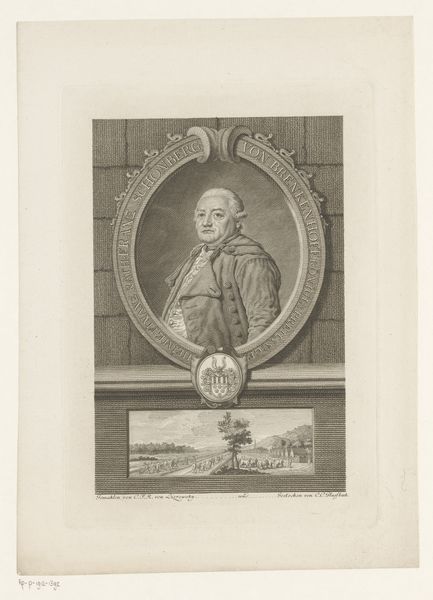
engraving
#
portrait
#
baroque
#
old engraving style
#
form
#
portrait reference
#
geometric
#
limited contrast and shading
#
line
#
portrait drawing
#
academic-art
#
remaining negative space
#
engraving
Dimensions: height 141 mm, width 111 mm
Copyright: Rijks Museum: Open Domain
Curator: Looking at this Baroque engraving from the mid-17th century, an immediate observation is how the textures almost feel imposed rather than inherent to the figure. Editor: Indeed. The work is a portrait of Johann Schweikhard von Kronberg by Johann Hogenberg. Consider the labor involved in creating these very fine lines on a metal plate and the access one needs to produce one. Curator: I agree. Looking closer, you can discern that the work has the effect of aggrandizing a figure invested with considerable religious and secular authority; observe the oval border emblazoned with the symbols of the man's offices, almost weaponized in their effect on the beholder. It places him distinctly within the sociopolitical hierarchies of his era. Editor: Precisely. Engravings like this were crucial for disseminating power and influence in an age before mass media. It would require incredible precision with the burin to produce those varying line weights, and we should ask ourselves where Johann received his materials and whether Johann was able to express their artistry at every level. Curator: Thinking about von Kronberg's role as Archbishop, how does his status shape the representation of masculinity? This isn't the rugged, warrior-like depiction we often see; it's refined, intellectual. The choice of medium and style arguably elevates his perceived status, but also renders it a fragile construct of presentation and visual manipulation. Editor: Good point; though what’s most striking is that even if the final image produces status and reverence, engravings themselves were fairly reproducible for consumption within certain classes and across the Hapsburg Empire. It invites reflection on the economies that gave way for portraits like this one. Curator: I’m drawn to how it illustrates the dynamics between visibility, representation, and power within a society steeped in religious doctrine. Editor: And I find myself impressed by the intricate workmanship—the craft itself elevating subject to power.
Comments
No comments
Be the first to comment and join the conversation on the ultimate creative platform.
